We at RocketNews24 believe that to truly understand a country’s people you need to know something about their history and where they came from. So following last week’s popular Japan Bucket List: Things you need to do to really understand Japan, this week we offer you eight places that contributed greatly to the development of Japan, its culture, and people.
Get ready to take your understanding of the Japanese people a step further with eight historical places that have helped shaped them into the people they are today. Let’s go!
1. Hokkaidō 北海道
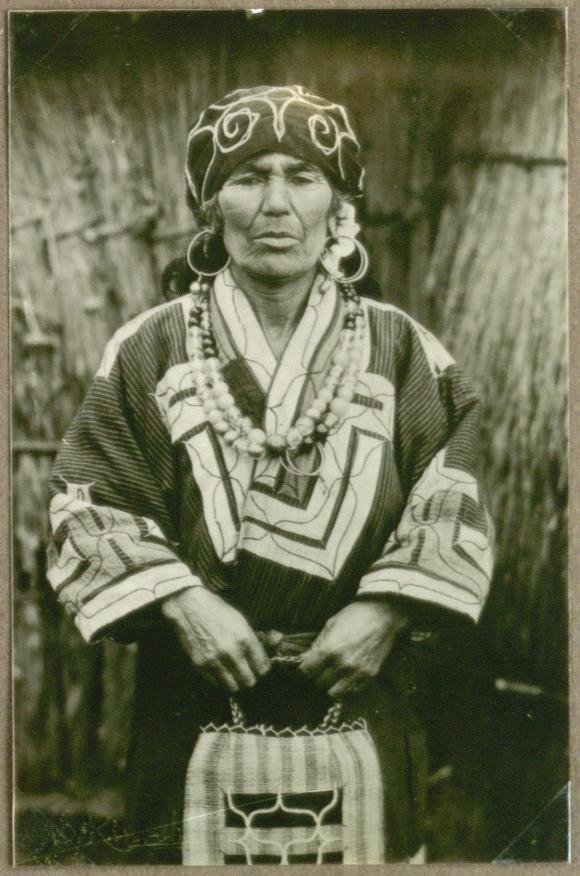
While winter sports and the Sapporo Snow Festival are some of Hokkaido’s biggest foreign tourism draws, the importance of the island to the Japanese is for other reasons. Hokkaido has 12 prefectural national parks and wetlands, and its vast farmland produces the majority of the nation’s potatoes, soybeans, wheat and corn. With large swaths of land, Hokkaido has a huge dairy industry and its forests support commercial timber enterprises. Wildlife includes Higuma bears, Ezo squirrels, Ezo owls, white-tailed sea eagles and the red-crowned crane. (In Japanese folklore, the crane is said to live 1,000 years and grants wishes in return for one’s sacrifices). Shiretoko National Park is a designated UNESCO World Heritage Site and the ice floes of Abashiri on the Okhotsk Sea are a domestic tourist draw.
But Hokkaido is also home to the Ainu, an ethnic group indigenous to Hokkaido. With parallels to the US and the Native Americans, or Australia and the Aboriginals, the Ainu have been subject to discrimination, and land settlements are still a point of contention today.
During the Nara and Heian periods (710–1185), the Ainu traded with the Japanese mainlanders but as the Tokugawa Shogunate (1603–1868) became increasingly wary of the expansion of Russia, Ezo was procured as a protective buffer. In 1869 the island became known as Hokkaido and in 1947 was given status equal to a prefecture.
Despite attempted assimilation programs by the Japanese government, the Ainu have remained marginalized. It is difficult to tell the difference between the Ainu and mainland Japanese in this day and age, as many have moved out of Hokkaido to places like Tokyo and integrated to a degree, but the Ainu are said to be more hirsute than mainland Japanese. There are an estimated 25,000 Ainu living in Hokkaido. The plight of the Ainu is a common theme in media in Japan as the group pushes for more recognition and protection of their human rights.
Things to do: The Poroto Kotan Ainu Museum in Shiraoi, the lavender fields of Furano in summer.
Documentary on the Ainu by Al Jazeera English
2. Tōkyō 東京
▼Nihonbashi in Tokyo, the last stage of the Tokaido road from Kyoto. Woodblock print by Hiroshige.
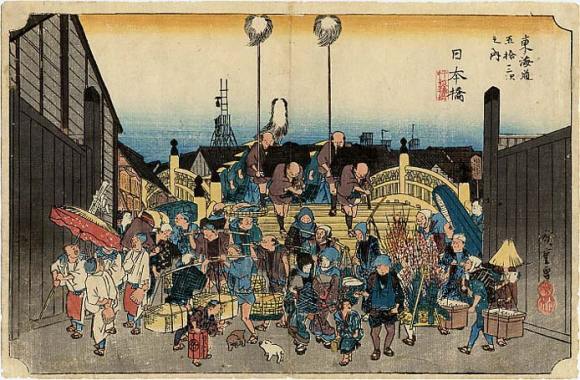
The face of Tokyo has changed over the years from its small fishing village past to what is now its own brand of highrises and modernized neighborhoods. From Akihabara, with its otaku culture and maid cafes, to Shibuya scramble crossing and the debut of a new LCD screen as large as a basketball court, and the strange vending machines in Asakusa, much of the excitement of Tokyo can be found by just walking around. But even as the archipelago’s financial center, Tokyo still retains its small-town flavor among its unique neighborhoods, where you’ll find absolutely everything you’ve ever dreamed of, and more. For example, did you know that in Asakusa the art of sharpening and polishing samurai swords is still taught at the “Tokyo Polishing Master Craftsmen Institution?”
During the Edo period (1603-1868), Tokyo was a castle town and the seat of the Tokugawa Shogunate. Daimyo visited from other regions of Japan to report to the Shogun every second year and these feudal lords brought with them large entourages who were housed around the castle in Yanamote.
The Edo period is a period when Edo shigusa (values and manners of Edo) is thought to have been prevalent, temple bells were tolled to tell the time, and the city of one million retained a strict sense of order. The hierarchical society of the time was responsible for much of the propriety, a system based on neo-Confucianism stressing morals and education and dividing the population according to their role in society. The emperor at the top, was followed by the Shogun, daimyo, samurai, peasants (for their role in providing sustenance), artisans, and merchants. At the very bottom were the eta (or burakumin), those who had occupations considered kegare (unclean) such as butchers, leather workers, undertakers, and executioners. Despite their necessary role in society, people of this class were forced to live in the northeastern corner of the city as outcasts.
This was also the period of sakoku, or isolation, when Japan was closed to the rest of the world except for limited trading with the Chinese, Koreans, Dutch, Ryūkyū Kingdom (present-day Okinawa) and the Ainu. But this sequestration of the country also allowed Japanese culture to thrive and develop. The floating world was in full swing as was bushido–the way of the samurai. Samurai (anywhere from five to eight percent of the Japanese population at that time) strutted about with their swords and honed their warrior skills by practicing archery on horseback. The warriors not only practiced martial arts, but also found time for literature, poetry, calligraphy, painting, and tea ceremony. The Edo period and the Genroku period that immediately followed (1688 – 1703) saw ukiyo-e woodblock prints became a major art form and works by Hokusai (“Views of Mt. Fuji) and Hiroshige’s “Fifty-Three Stations of the Tokaido” (the main travel and transport route between Kyoto and Edo) printed. Kabuki came into vogue as a new art form and wagashi, traditional Japanese sweets, became popular.
During the Meiji era (1868 – 1912) when Japan moved away from the feudal system, Japan’s iconic samurai no longer had a means of support. Class restrictions on employment were revoked in 1871. Even though the Meiji government abolished the buraku caste, the stigma lives on today for the three million or so buraku people who suffer injustices, especially in the areas of employment and marriage. In 1946, what developed into the Buraku Liberation League, formed to fight for the rights of these people, but remains controversial due to some of its tactics.
Things to do: Tokyo Imperial Palace, kabuki theater, Tokyo Giants baseball game.
Movies: Tanpopo (Directed by Jūzō Itami, starring Ken Watanabe), Tokyo Story (Directed by Yasujirō Ozu)
3. Ōsaka 大阪
Osaka is known as Japan’s commercial center. Osaka’s location on Japan’s Seto Inland Sea surely gave it an advantage over Edo with the huge potential in domestic sea trade stretching the length of the inland Sea from Osaka all the way west to Kyushu.
Hideyoshi Toyotomi, the daimyo who ordered the construction of Osaka castle, aimed to build the largest and most intimidating of all castles in Japan. The erection of the edifice started in 1583 and was completed in 1590 (the current castle is a reconstruction). Toyotomi hosted lavish social events and tea ceremonies, inviting acclaimed masters and using the finest ceramic implements of the time. He even constructed a mobile tea room covered with gold leaf, fashioned after the Golden Pavilion (Kyoto) which he could take with him.
Tokyo and Osaka enjoy a rivalry today similar to the East coast vs. the West coast in the U.S.; Tokyo is seen as sophisticated, conservative and the people a bit indifferent compared to Osaka, where people are more friendly, passionate and gregarious. To this day, Osaka is known for its cunning businessmen and manzai comedy. It is also known for Osaka-style okonomiyaki, takoyaki (fried octopus balls) and naniwa mixed sushi.
Things to do: Hanshin Tigers baseball game, Osaka castle and museum, Spa World, the Sumo Spring Basho, and Mino Park for hiking.
Movies: Osaka: Black Rain (Directed by Ridley Scott, starring Michael Douglas)
4. Nara 奈良
▼The great Buddha at Tōdaiji Temple
During the Nara period (710-794), named for when Japan’s capital was located here, Buddhism was sponsored by the state and acted as protector of the state. Tōdaiji Temple in Nara served as the head. Japan’s oldest Buddhist structures and wooden buildings are located in or near Nara. Buddhist iconography was imported from China and Niō statues (that stand in pairs and act as guardians at temple gates) were one of the influences from this time.
The Nara period is also when the two oldest extant documents on Japanese creation and history were written: the Kojiki (712) “Records of Ancient Matters” of which is Japan’s oldest surviving written work and on which many Shinto myths are based, and the Nihon Shoki (720), “Chronicles of Japan,” which was written entirely in classical Chinese. These two texts are often referred to and consulted for earliest references to places and events, similar to how the Bible is referenced in Western cultures. Themes and names of characters from the Kojiki continue to pervade Japanese pop culture appearing in films, manga and anime. You’ll sometimes find a copy of the Kojiki in Japanese hotels the way bibles can be found in Western hotels.
Things to do: Tōdaiji Temple and other UNESCO world heritage sites, take a private, guided walking tour.
Video of Niō statues at Tōdaiji Temple
5. Kyōto 京都
Kyoto, with over 1,600 Buddhist temples and 400 Shinto shrines, served as the imperial capital of Japan for more than a thousand years. Buddhist temples, court nobles and the refined lifestyles defined the flavor of the Heian period (794–1185).
“The Tale of Genji” includes lavish descriptions of social life including the Imperial water gardens where people glided around on wooden boats admiring the scenery or while moon-viewing to observe the moon’s reflection in the water. Music, singing, painting and writing tanka poems under the moon all took place in this era. Kyoto city was populated with traditional machiya style houses (many of which have now been turned into restaurants and shops). While Japanese gardens have their origins in Shinto, the end of the Heian period saw a new type of garden called a Paradise Garden (such as the garden at Byōdō-in Temple in Uji near Kyoto) develop in line with beliefs of Pure Land Buddhism and Amida Buddha’s paradise of the West. In art, raigō paintings depicting the Buddha on a purple cloud (who visits at your deathbed) became popular as well as e-maki illustrated hand scrolls. Imperial court cuisine called yusoku ryori a type of traditional Japanese haute cuisine came to the fore. Rakugo storytelling was introduced by Buddhist monks hoping to liven up their sermons.
At this time the Buddhist priest Kūkai (aka Kōbō Daishi) went abroad to China to study Shingon and brought this new form of Buddhism back to Japan and to his aristocratic roots in Kyoto in 806. Shingon greatly influenced Buddhism in Japan by introducing mandalas and pilgrimages. Shingon temples were constructed in more contemplative spots in the mountains, away from the city. Though not as well-known abroad, Shingon is the third most popular sect of Buddhism in Japan.
During the Muromachi Period (1337 to 1573) Kyoto again introduced new cultural aspects that came to be known as “Muromachi culture,” which compromised noh drama, kyogen, tea ceremony, landscape gardening (such as that of the Golden Pavilion) and flower arranging, all largely spread via the influence of Zen Buddhism.
Things to do: Geisha performances, any of the many UNESCO World Heritage sites, Toei Uzamasa Eigamura film studio and amusement park, International Manga Museum.
Books: Kyoto Machiya Restaurant Guide, by Judith Clancy, The Lady and the Monk by Pico Iyer.
6. Hiroshima 広島
To most of the world, the atomic bombings of Hiroshima and Nagasaki were what ended WWII. To Japan, they were much more than that. The radiated explosions also convinced Japan that they should never go to war again. This is what is behind Article 9 of the National Constitution of Japan that renounces war and prohibits Japan from maintaining an army other than Self Defense Forces. Article 9 has done much to promote peace education within Japan and around the world. The Hiroshima Peace Park is a popular destination for Japanese public school graduation trips.
Things to do: Hiroshima Peace Park, Miyajima Island and Itsukushima Shrine and torii gate.
Books: Black Rain by Masuji Ibuse.
7. Nagasaki 長崎市
▼Nagasaki Port
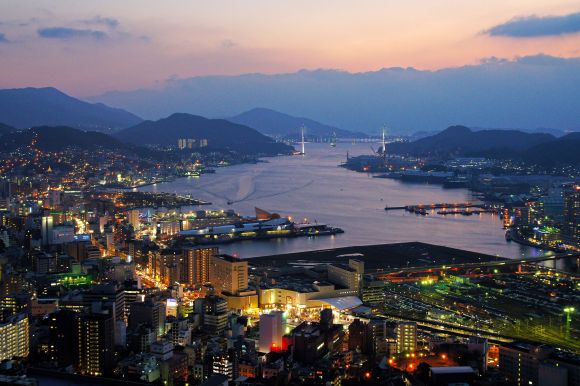
The first Portuguese merchants arrived in Tanegashima in 1543. Subsequent trade brought tobacco, bread, textiles and castella (sponge cake), tempura and, perhaps most importantly, firearms. Then in 1549, Francis Xavier arrived in Kagoshima to spread Christianity throughout Japan.
During the Edo period when Japan was closed off to the rest of the world, the only Europeans the country maintained trading with was the Dutch and in 1643, Dejima, an artificial island, was used as a trading post for this. Japan maintained limited trade with China in Nagasaki too. Eventually, Nagasaki became a free port in 1859.
Besides Nagasaki being an important trading location for Japan, it also became a refuge for Christians in 1580 as the evangelizing of Christianity had converted over 300,000 people and was beginning to be seen as a black cloud as Christian followers increasingly followed the word of priests and the Christian teachings rather than their rulers. To maintain control of the population and rule, Ieyasu Tokugawa eventually banned Christianity nationwide in 1614. What followed was the enforced suppression and persecution of thousands of Christians. The many Christian-related sites in Nagasaki led to the establishment of Nagasaki as a center for Japanese Christians.
Things to do: Nagasaki Atomic Bomb Museum, Dejima museum, Oura Church, sites at Satome including Karematsu Shrine, Endo Shusaku museum, and Bastian’s Hut.
Books: One Thousand Autumns of Jacob de Zoet by David Mitchell, In Search of Japan’s Hidden Christians by John Dougill, Silence by Endo Shusaku and the upcoming film by Martin Scorsese based on it.
8. Tōhoku 東北
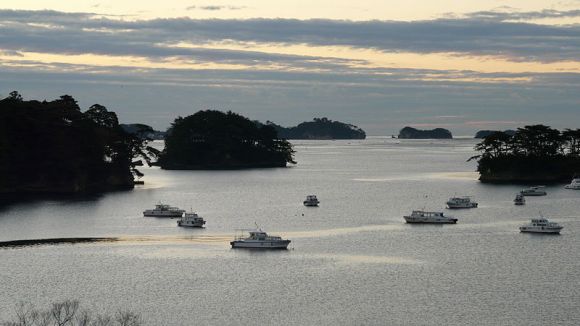
The Tohoku region consists of six prefectures: (from north to south) Aomori, Akita and Iwate, Yamagata and Miyagi, and Fukushima. Haiku poet Matsuo Bashō wrote his famous account of The Narrow Road to the Deep North while traveling through this region. Akita Prefecture is the home of Japan’s own breed of dog, the Akita, the most iconic of which is Hachiko, a dog enshrined outside Tokyo’s Shibuya railway station in Tokyo. Matsushima, in Miyagi Prefecture, is one of Japan’s Three Great Views, and in the prefecture’s town of Naruko they make traditional Japanese kokeshi dolls. Aomori Prefecture hosts Mt. Osore, the mythical entrance to hell and where Japan’s uniquely female-only itako fortune-tellers live.
Fukushima Prefecture, though recently brought to the front in the wake of the 2011 earthquake, tsunami and nuclear disaster, is the third largest prefecture in Japan. While many Japanese are wary of buying produce grown in the prefecture as a result of the events of March 11, 2011, due to its size much of Fukushima is actually further away from the stricken Fukushima Daiichi Nuclear Power Plant than some neighboring prefectures. The Tohoku area as a whole, meanwhile, is further away from Daiichi than Tokyo (200 km or about 120 miles), so tourists considering visiting Tohoku need not be concerned for their safety. Japan has a history of earthquakes and tsunami and they know what a devastated area needs. With numerous natural springs, lakes, and mountains, Japanese people are heading to Fukushima Prefecture to help support the economy and put the region back on the map as a tourism destination. Maybe you should too.
Things to do: Inawashiro Lake and Tsuruga Caslte in Aizu, Bandai-Asahi National Park, fantastic skiing and snowboarding in winter.
Books: The Roads to Sata by Alan Booth, On the Narrow Road, Lesley Downer
Feature Image: Ainu Woman, Flickr Commons, S. Kinoshita (palnatoke)
Now read: Japan Bucket List: Things you need to do to really understand Japan

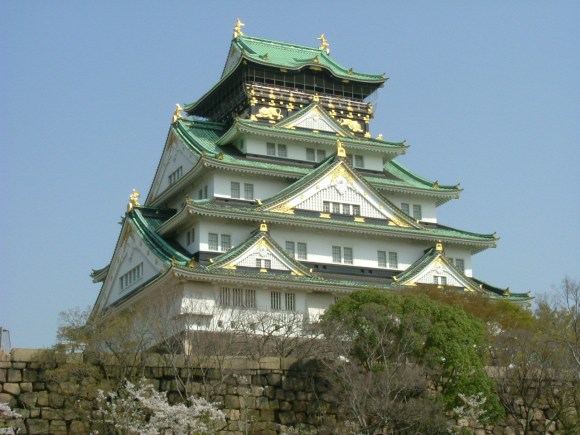
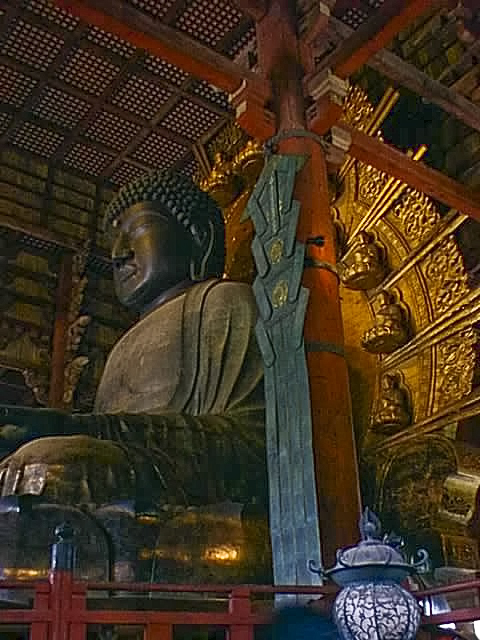
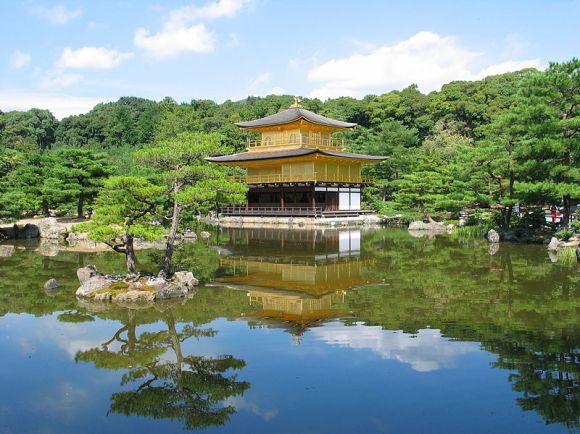
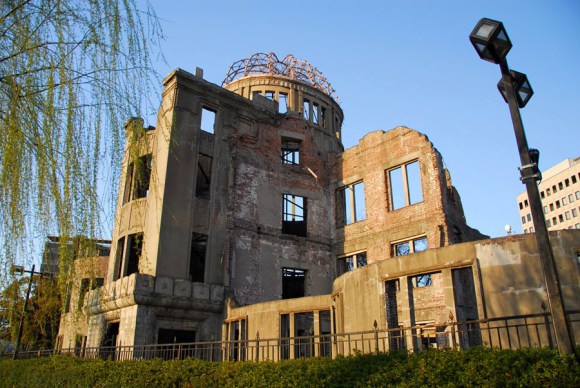
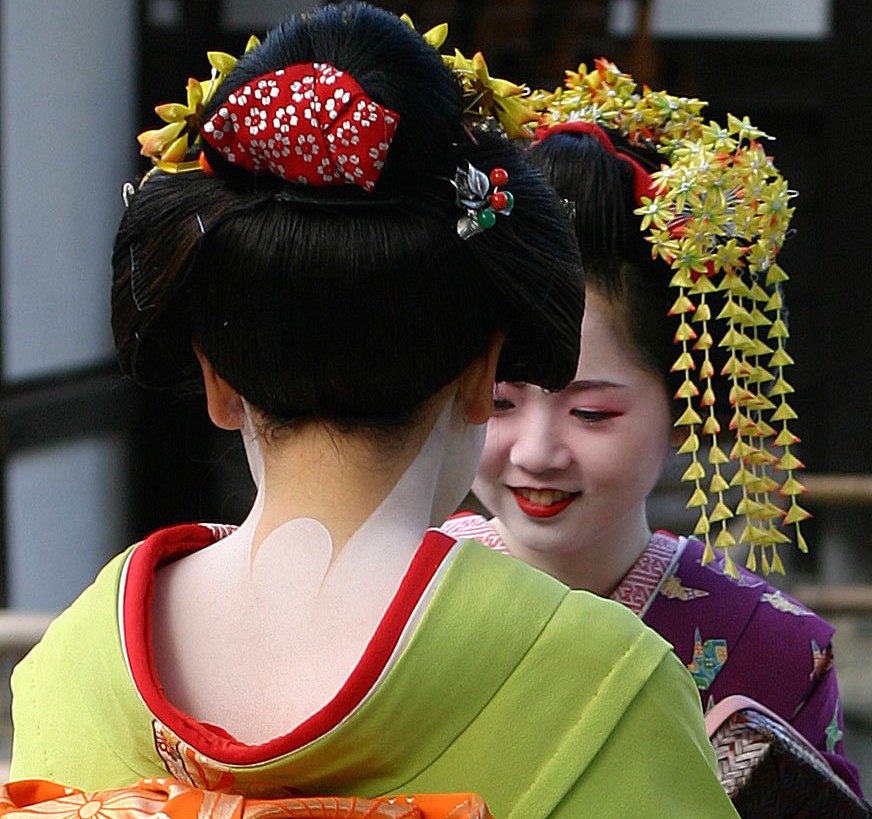
 When do Japanese women have their first kiss? Survey finds gap between different parts of Japan
When do Japanese women have their first kiss? Survey finds gap between different parts of Japan Tokyo popup shop sells Japanese indigenous Ainu-inspired tableware for limited time
Tokyo popup shop sells Japanese indigenous Ainu-inspired tableware for limited time The most popular places in Japan for viewing sakura in 2024, according to local travel agency
The most popular places in Japan for viewing sakura in 2024, according to local travel agency Sakura in Japan 2019: The best spots for hanami cherry blossom viewing
Sakura in Japan 2019: The best spots for hanami cherry blossom viewing Journey through Ainu myth in the old-meets-new forest night walk Kamuy Lumina experience
Journey through Ainu myth in the old-meets-new forest night walk Kamuy Lumina experience Bad tourist manners at Mt Fuji Lawson photo spot prompts Japanese town to block view with screens
Bad tourist manners at Mt Fuji Lawson photo spot prompts Japanese town to block view with screens McDonald’s Japan’s new pancake pie is a taste sensation
McDonald’s Japan’s new pancake pie is a taste sensation One of Japan’s oldest castles now lets travelers spend night on the grounds, drink in its keep
One of Japan’s oldest castles now lets travelers spend night on the grounds, drink in its keep Studio Ghibli unveils new goods that tip the hat to The Cat Returns
Studio Ghibli unveils new goods that tip the hat to The Cat Returns All-you-can-drink Starbucks and amazing views part of Tokyo’s new 170 meter-high sky lounge
All-you-can-drink Starbucks and amazing views part of Tokyo’s new 170 meter-high sky lounge Foreigner’s request for help in Tokyo makes us sad for the state of society
Foreigner’s request for help in Tokyo makes us sad for the state of society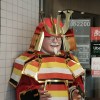 History’s largest force of Samurai Colonel Sanders deploying to KFC Japan branches
History’s largest force of Samurai Colonel Sanders deploying to KFC Japan branches Studio Ghibli unveils massive T-shirt collection featuring top anime movie characters
Studio Ghibli unveils massive T-shirt collection featuring top anime movie characters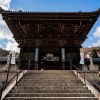 A visit to the ordinarily forbidden hall of Nara’s Hasedera Temple【Photos】
A visit to the ordinarily forbidden hall of Nara’s Hasedera Temple【Photos】 Red light district sushi restaurant in Tokyo shows us just how wrong we were about it
Red light district sushi restaurant in Tokyo shows us just how wrong we were about it Japanese city loses residents’ personal data, which was on paper being transported on a windy day
Japanese city loses residents’ personal data, which was on paper being transported on a windy day McDonald’s new Happy Meals offer up cute and practical Sanrio lifestyle goods
McDonald’s new Happy Meals offer up cute and practical Sanrio lifestyle goods Japanese ramen restaurants under pressure from new yen banknotes
Japanese ramen restaurants under pressure from new yen banknotes Ghibli Park now selling “Grilled Frogs” from food cart in Valley of Witches
Ghibli Park now selling “Grilled Frogs” from food cart in Valley of Witches Two things to do, and two things not to do, when leaving a traditional Japanese inn
Two things to do, and two things not to do, when leaving a traditional Japanese inn New definition of “Japanese whiskey” goes into effect to prevent fakes from fooling overseas buyers
New definition of “Japanese whiskey” goes into effect to prevent fakes from fooling overseas buyers Our Japanese reporter visits Costco in the U.S., finds super American and very Japanese things
Our Japanese reporter visits Costco in the U.S., finds super American and very Japanese things More foreign tourists than ever before in history visited Japan last month
More foreign tourists than ever before in history visited Japan last month New Pokémon cakes let you eat your way through Pikachu and all the Eevee evolutions
New Pokémon cakes let you eat your way through Pikachu and all the Eevee evolutions Disney princesses get official manga makeovers for Manga Princess Cafe opening in Tokyo
Disney princesses get official manga makeovers for Manga Princess Cafe opening in Tokyo French Fries Bread in Tokyo’s Shibuya becomes a hit on social media
French Fries Bread in Tokyo’s Shibuya becomes a hit on social media Sales of Japan’s most convenient train ticket/shopping payment cards suspended indefinitely
Sales of Japan’s most convenient train ticket/shopping payment cards suspended indefinitely Sold-out Studio Ghibli desktop humidifiers are back so Totoro can help you through the dry season
Sold-out Studio Ghibli desktop humidifiers are back so Totoro can help you through the dry season Japanese government to make first change to romanization spelling rules since the 1950s
Japanese government to make first change to romanization spelling rules since the 1950s Ghibli founders Toshio Suzuki and Hayao Miyazaki contribute to Japanese whisky Totoro label design
Ghibli founders Toshio Suzuki and Hayao Miyazaki contribute to Japanese whisky Totoro label design Doraemon found buried at sea as scene from 1993 anime becomes real life【Photos】
Doraemon found buried at sea as scene from 1993 anime becomes real life【Photos】 Tokyo’s most famous Starbucks is closed
Tokyo’s most famous Starbucks is closed One Piece characters’ nationalities revealed, but fans have mixed opinions
One Piece characters’ nationalities revealed, but fans have mixed opinions We asked a Uniqlo employee what four things we should buy and their suggestions didn’t disappoint
We asked a Uniqlo employee what four things we should buy and their suggestions didn’t disappoint Kansai area people more genetically predisposed to liking coffee than elsewhere in Japan
Kansai area people more genetically predisposed to liking coffee than elsewhere in Japan Dress like an aristocrat from the Nara period at new costume rental shop in Nara【Photos】
Dress like an aristocrat from the Nara period at new costume rental shop in Nara【Photos】 Survey picks Japan’s top three (actually four) open-air museums【Photos】
Survey picks Japan’s top three (actually four) open-air museums【Photos】 Gunkanjima and 22 sites of Japan Meiji Industrial Revolution up for World Heritage award
Gunkanjima and 22 sites of Japan Meiji Industrial Revolution up for World Heritage award Starbucks Japan joins Been There drinkware line with 20 cool designs for all over Japan【Pics】
Starbucks Japan joins Been There drinkware line with 20 cool designs for all over Japan【Pics】 The top 10 universities in Japan determined by 2021 World University Rankings
The top 10 universities in Japan determined by 2021 World University Rankings Updated cherry blossom forecast moves up blooming date, predicts sakura season start for Ueno Park
Updated cherry blossom forecast moves up blooming date, predicts sakura season start for Ueno Park Bones of over 1,500 people found at Osaka Station area construction site
Bones of over 1,500 people found at Osaka Station area construction site Adorable two-yen stamp distracts us from our anger over Japan’s impending tax hike
Adorable two-yen stamp distracts us from our anger over Japan’s impending tax hike There’s a samurai-era village for you to walk through at this awesome overlooked museum in Japan
There’s a samurai-era village for you to walk through at this awesome overlooked museum in Japan Go to hell: Unzen Hot Springs invites visitors to take an infernal stroll through a field of deadly hell-mouths
Go to hell: Unzen Hot Springs invites visitors to take an infernal stroll through a field of deadly hell-mouths 8 Japan-related events to look forward to in 2016!
8 Japan-related events to look forward to in 2016! Japanese constipation survey reveals the most and least poop-frustrated prefectures
Japanese constipation survey reveals the most and least poop-frustrated prefectures
Leave a Reply